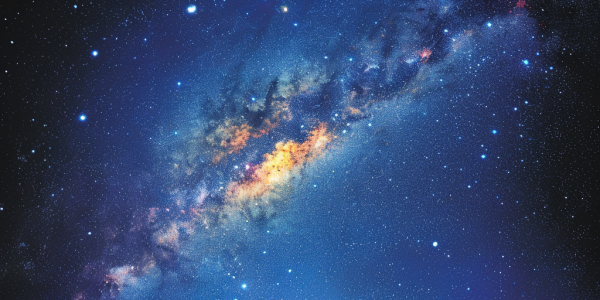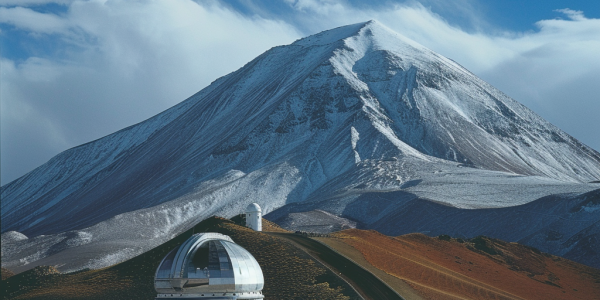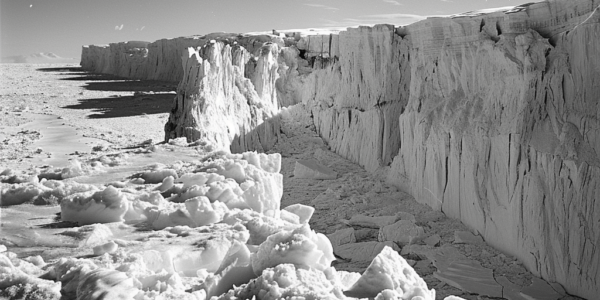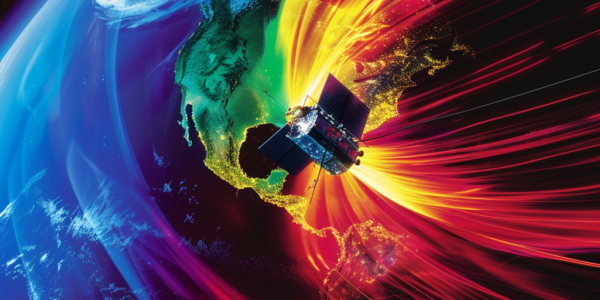NASA’s Chandra Observatory Reveals New Insights on Black Hole Jets
NASA’s Chandra X-ray Observatory has made groundbreaking discoveries about the jets from the supermassive black hole in the Centaurus A galaxy, revealing particles moving at nearly the speed of light. This research enhances our understanding of black holes and their jets, showcasing a novel approach to studying these cosmic phenomena. With advanced observational techniques, scientists are poised to uncover more about the mysteries of black holes and their role in galaxy evolution.
JWST Findings Challenge Timeline of Universe’s Reionization Epoch
Recent findings from the James Webb Space Telescope challenge established theories on the epoch of reionization, suggesting it may have ended 350 million years earlier than previously thought. This pivotal period, marked by the formation of the first stars and galaxies, plays a crucial role in our understanding of cosmic evolution. Discover how these groundbreaking observations are reshaping our knowledge of the universe’s infancy.
New Study Sheds Light on Early-Universe Quasars Using Advanced Imaging Techniques
Recent research utilizing the Dark Energy Camera (DECam) has shed light on the environments of early-universe quasars, revealing they likely formed in densely populated regions rich in gas. Led by Trystan Lambert, this groundbreaking study is the largest on-sky area search around an early-universe quasar, VIK 2348–3054, enhancing our understanding of galaxy formation and the evolution of supermassive black holes.
Japanese University of Tokyo Atacama Observatory (TAO) Opens as World’s Highest Astronomical Site
The Japanese University of Tokyo Atacama Observatory (TAO) has opened as the world’s highest astronomical site, located at a staggering altitude of 5,640 meters in the Chilean Andes. Equipped with a 6.5-meter telescope and advanced infrared observation instruments, TAO aims to delve into galaxy evolution and exoplanet studies. The strategic location on Cerro Chajnantor offers minimal atmospheric interference and a perpetually dry climate, setting the stage for groundbreaking discoveries in astronomical research.
China’s Rapid Expansion of Electric Power Grid Leads to Surge in Greenhouse Gas Emissions
China’s rapid expansion of its electric power grid has led to a concerning increase in the release of sulfur hexafluoride (SF6) gas, a greenhouse gas 24,300 times more potent than carbon dioxide (CO2) in creating the greenhouse effect. This surge in SF6 emissions poses a threat to global efforts in combating climate change, as it significantly impacts the planet’s radiative budget. The study emphasized the urgency for immediate action to reduce and ultimately eliminate SF6 emissions, stressing the imperative nature of global cooperation in addressing this pressing environmental issue.
KASI to Conduct Ground Observations of CODEX During Total Solar Eclipse
South Korea’s space institute, KASI, plans to conduct ground observations of the Coronal Diagnostic Experiment (CODEX) during the total solar eclipse on April 8th in collaboration with NASA. This presents a unique opportunity to study the Sun’s corona, normally obscured by bright sunlight. KASI will dispatch teams to Texas to utilize polarizing cameras and a new polarimetric instrument, marking a significant advancement in solar science.
Our Accidental Universe: A Journey Through Space and Mystery
Join astrophysicist Chris Lintott on a captivating journey through the universe in Our Accidental Universe. Delve into the mysteries of Venus’s clouds, the potential for extraterrestrial life, and the challenges of observing the universe’s early stages. A must-read for anyone curious about the cosmos and the endless possibilities that lie beyond our planet.
Research Highlights Potential Impact of Individual Weather Events on Sea Level Rise
Recent research has highlighted the potential impact of individual weather events on the world’s largest ice sheets and, consequently, on sea level rise. A heat wave in Greenland and a storm in Antarctica have raised concerns about the long-term effects of such events, especially in the context of a warming climate. According to the Intergovernmental Panel on Climate Change (IPCC), global sea levels are projected to rise by 28 cm to 100 cm by 2100. This wide range of estimates underscores the uncertainty surrounding future sea level rise and its potential implications for millions of people worldwide.
ESA Approves New Scout Satellites NanoMagSat and Tango
ESA has approved two new Scout satellites, NanoMagSat and Tango, to measure Earth’s magnetic field and greenhouse-gas emissions, respectively. These missions are part of ESA’s embrace of the New Space era and are designed to deliver value-added science through the miniaturization of existing space technologies or the demonstration of new observing techniques.
Astronomers Witness Powerful Jets Ejected from Supermassive Black Hole Perseus A
Astronomers have made a groundbreaking observation of the supermassive black hole, Perseus A, using the Event Horizon Telescope. This discovery sheds light on the battle between magnetism and gravity within black holes, providing valuable insights into their feeding mechanisms and the formation of powerful jets that extend far beyond their host galaxies.










